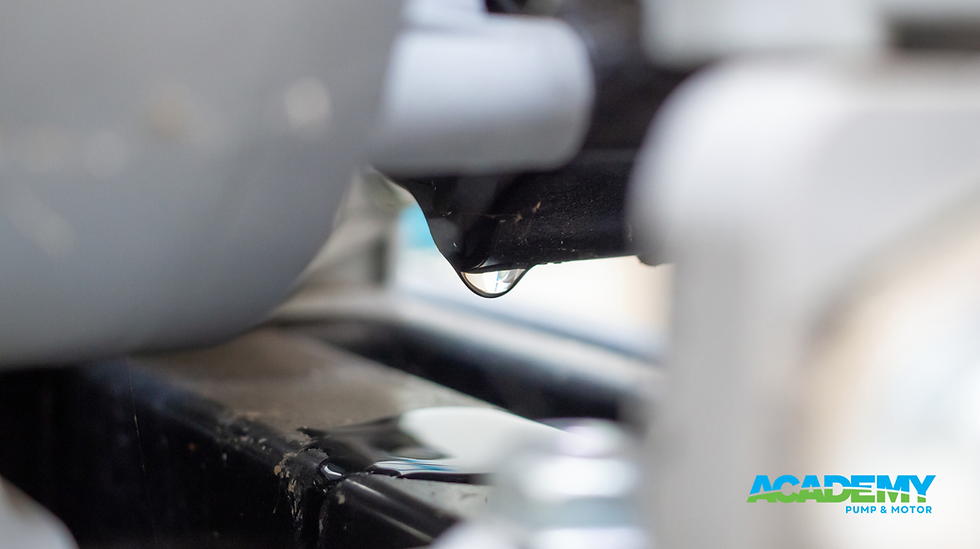How to Choose Between Centrifugal and Positive Displacement Pumps: A Comprehensive Guide
- Lincoln Jones

- Sep 15, 2024
- 3 min read

When it comes to selecting the right pump for your project, understanding the fundamental differences between centrifugal and positive displacement pumps is essential. Each pump type has unique characteristics, making them suitable for specific applications. To help you make an informed decision, this guide will break down the key features of these two major pump categories, so you can choose the best option for your needs.
Centrifugal Pumps: Efficient for High-Flow, Low-Pressure Applications
Centrifugal pumps are among the most commonly used pumps in various industries due to their simple design, efficiency, and versatility. They work by converting rotational energy, typically from a motor, into kinetic energy in the form of fluid flow.
Key Features of Centrifugal Pumps:
Flow Rate: Centrifugal pumps are ideal for applications that require high flow rates and relatively low pressure. They can move large volumes of liquid efficiently, making them suitable for processes where maintaining consistent flow is important.
Pressure Variations: These pumps are best for applications with consistent, low-viscosity liquids. However, their performance can drop when dealing with thick fluids or varying system pressures.
Energy Efficiency: Centrifugal pumps tend to be energy-efficient when operating at their designed flow rate and pressure, making them cost-effective for continuous operation.
Best Applications for Centrifugal Pumps:
Water treatment and supply systems
HVAC systems
Irrigation
Low-viscosity liquid transfer
Industrial cooling
Positive Displacement Pumps: Precision for High-Pressure, Low-Flow Applications
Positive displacement pumps operate differently by trapping a fixed amount of fluid in a chamber and then displacing it through the discharge. This method allows them to maintain a consistent flow regardless of pressure, making them highly effective for specific industrial processes.
Key Features of Positive Displacement Pumps:
Flow Consistency: Positive displacement pumps provide a constant flow, even as system pressure changes. This makes them ideal for applications that require precise fluid control and steady performance.
Handling Viscous Fluids: These pumps are designed to handle a wide range of viscosities, making them the go-to option for pumping thicker liquids like oils, slurries, and chemicals.
High-Pressure Capability: Positive displacement pumps excel in high-pressure applications, ensuring that the pump’s output remains consistent regardless of the conditions.
Best Applications for Positive Displacement Pumps:
Chemical processing
Oil and gas industries
Food and beverage production
Dosing and metering applications
High-viscosity fluid transfer
Key Differences Between Centrifugal and Positive Displacement Pumps
Flow Rate vs. Pressure: Centrifugal pumps deliver high flow rates at lower pressures, while positive displacement pumps offer steady flow at higher pressures.
Fluid Viscosity: Centrifugal pumps perform best with low-viscosity liquids, while positive displacement pumps can handle a broad range of viscosities, including thick, sludge-like fluids.
Performance Consistency: Positive displacement pumps maintain a constant flow rate despite pressure changes, whereas centrifugal pumps’ performance fluctuates based on system pressure and fluid viscosity.
Energy Efficiency: Centrifugal pumps are generally more energy-efficient in applications where they are well-suited, but positive displacement pumps are more efficient in high-pressure and precise-flow applications.
How to Choose the Right Pump for Your Project
Consider the Type of Fluid: If your application involves low-viscosity fluids such as water or solvents, a centrifugal pump may be your best bet. However, if you’re dealing with thicker liquids or need precise flow control, a positive displacement pump will likely perform better.
Evaluate the Pressure and Flow Requirements: For high-flow, low-pressure applications, centrifugal pumps are ideal. If you need high pressure or constant flow regardless of system pressure changes, a positive displacement pump is the way to go.
Analyze the Operational Costs: Centrifugal pumps tend to be more cost-effective when it comes to energy consumption in large-scale operations. However, for processes that require precision and high pressure, positive displacement pumps may offer better long-term value due to their reliability and consistency.
Choosing between centrifugal and positive displacement pumps depends on your specific project requirements. Understanding the differences in flow rate, pressure capabilities, fluid viscosity, and energy efficiency will help you select the most effective pump for your application. At Academy Pump and Motor, we’re here to help you navigate these decisions with expert advice and top-of-the-line pump solutions. Contact us today to discuss your project and find the perfect pump for your needs.



Comments